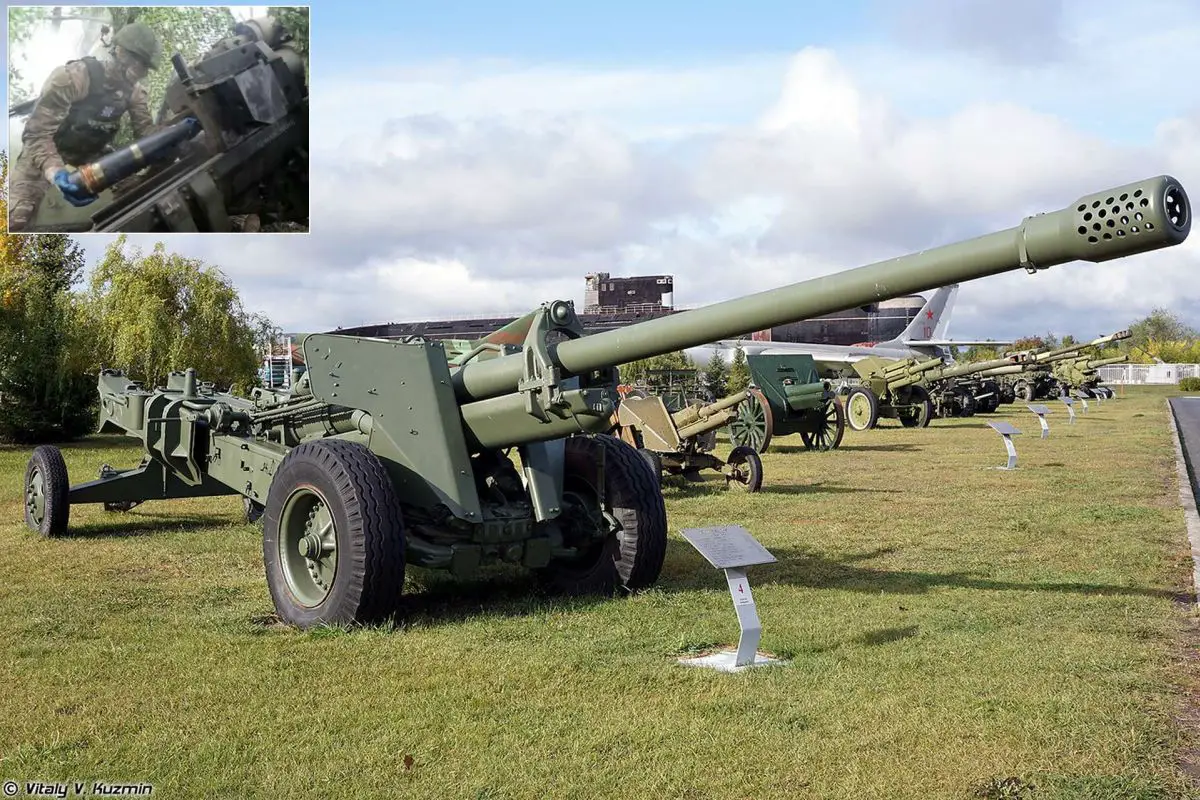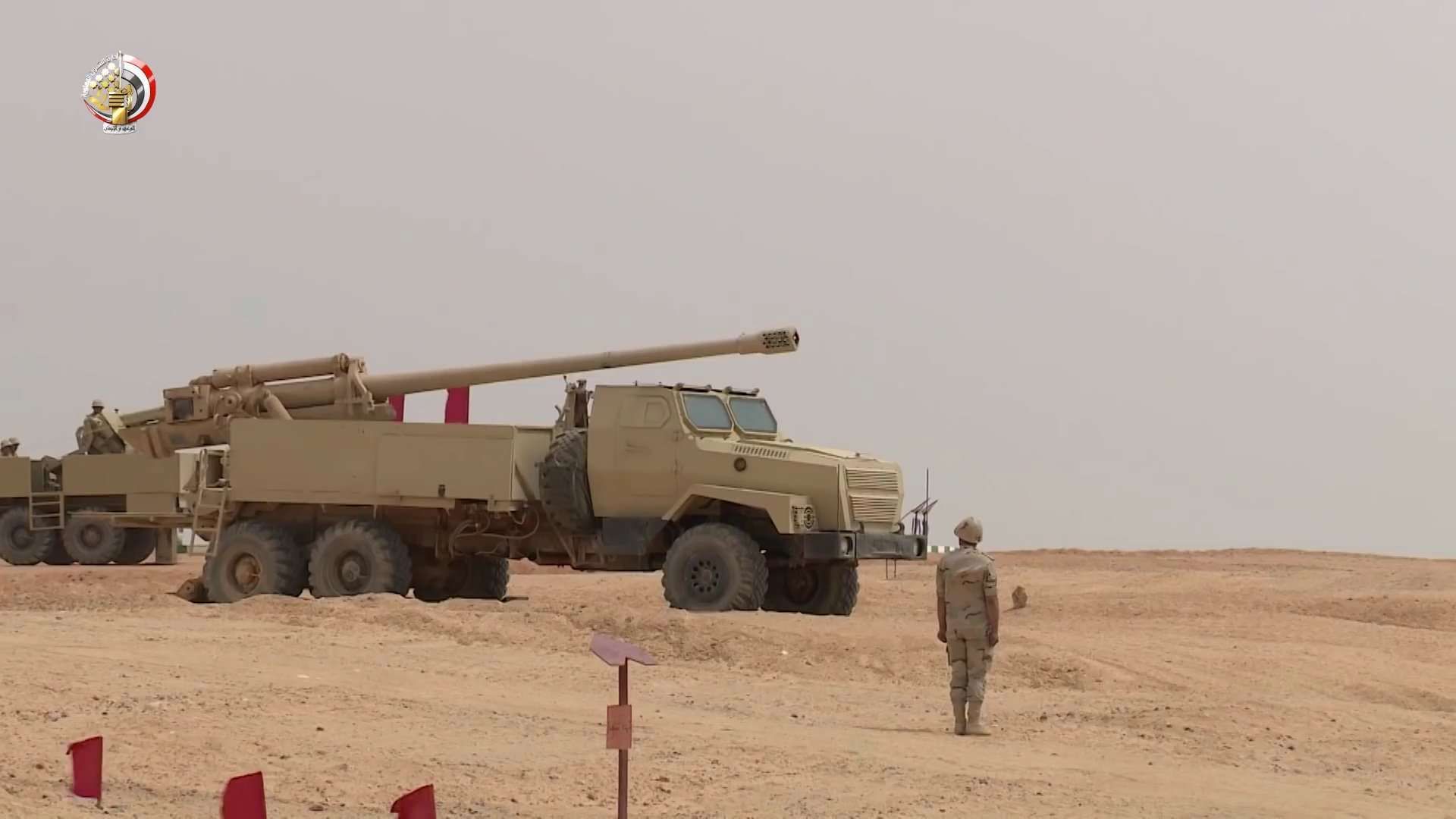Breaking News
Russian Forces reintroduce 1940s M-46 130mm towed guns in Ukraine with help from North Korea and Iran.
On July 14, 2024, the Twitter account Gianluca shared several videos showing an increased use of the M-46 130 mm towed guns, developed in the late 1940s, by Russian forces in Ukraine. One video displays several M-46s being transported on a military train at an unidentified location, while another video depicts an accident in the Rostov region involving an Army truck towing an M-46, which reportedly collided with a passenger car. These videos have led OSINT analysts to report the return of 130mm artillery guns to the Russian army.
Follow Army Recognition on Google News at this link

Several videos show an increased use of the M-46 130 mm towed guns, developed in the late 1940s, by Russian forces in Ukraine. (Picture source: Russian MoD and Vitaly Kuzmin)
OSINT analysts, using satellite photos of equipment storage bases and social media videos, suggest that the M-46s had previously been mothballed due to a lack of available shells, as Russia does not produce 130mm shells domestically. This issue seems to have been addressed through the supply of 130mm ammunition from North Korea. On June 25, 2024, Russian forces released new videos and photos from the frontline, showing units using the M-46 field gun with what appear to be North Korean-made 130mm HE-Frag projectiles.
Earlier in the year, reports indicated that Russia also received 130mm shells from Iran, a country whose army still operates hundreds of M-46 guns. However, available images of these shells have inscriptions in Chinese, indicating a complex supply chain. Unconfirmed reports from OSINT projects estimate that the Russian army had around 600 M-46 guns in storage, which could now all potentially be reactivated.
At the end of June, Russian President Vladimir Putin made an official visit to North Korea, his first since the turn of the century. Following this visit, videos featuring 130mm M-46 guns have become more frequent. OSINT researcher HighMarsed believes that Russia has started to remove a significant number of these howitzers from storage bases, estimating that about 300 of the 130mm M-46 cannons have been reactivated. Historically, the Russian military had fewer than 400 of these units after some were sold to countries like India.
The deployment of these older artillery pieces is driven by several factors. The Russian military currently has approximately 650,000 personnel deployed on Ukrainian soil, requiring additional equipment. Furthermore, there is a low inventory of modern 152mm artillery pieces due to a strategic shift towards rocket artillery. While Russia does not face an outright shortage of artillery pieces, there is a significant issue with barrel wear due to the high volume of daily artillery fire. The M-46 guns, with their longer range compared to the older D-30 models, provide a practical alternative.

Egypt upgraded its M46-1M 130mm towed field gun into a mobile artillery system, mounting it on modified armored Kraz 6×6 truck chassis for the mechanized infantry units. (Picture source: Egypt MoD)
Russia continues to deploy these 130mm pieces partly because they still have a substantial supply of 130mm ammunition from the Cold War. These guns, which had been in reserve for a long time, have been used in Ukraine since January. The Russian Army has recently escalated the deployment of these artillery pieces, which began production in the early 1950s and have seen extensive use. The Russian Ministry of Defense reported on June 26, 2024, that M-46 howitzers of the Sever Group of Forces were supporting Russian assault detachments in the Kharkiv region.
The M-46 is a Soviet-era 130mm towed field gun developed in the late 1940s and officially introduced in 1954. It features a split-trail carriage and a gun shield providing limited protection to the crew. The gun has a 58-caliber barrel with a pepperpot muzzle brake to manage recoil. It is capable of firing various ammunition types, including high-explosive fragmentation, armor-piercing, smoke, and illuminating shells. The M-46 can achieve a maximum range of 27.2 kilometers with standard rounds and up to 40 kilometers with rocket-assisted projectiles. Its rate of fire ranges from 5 to 7 rounds per minute, with some sources reporting up to 10 rounds per minute under optimal conditions. Operated typically by a crew of eight, the M-46 was designed for long-range bombardment and counter-battery fire.
The M-46 has been widely exported and used in numerous conflicts, serving in the armed forces of over 25 countries. It was employed during the Vietnam War and in various conflicts in the Middle East, Africa, and South Asia. During the Yom Kippur War, Israeli forces utilized captured M-46 guns against Syrian positions. In the Angolan Civil War and the South African Border War, the M-46 was used in counter-battery operations against South African artillery. The gun's range allowed Angolan and Cuban forces to effectively counter South African G5 howitzers. The M-46's role in these conflicts was significant due to its range and ability to deliver sustained firepower in both direct and indirect fire roles.


























